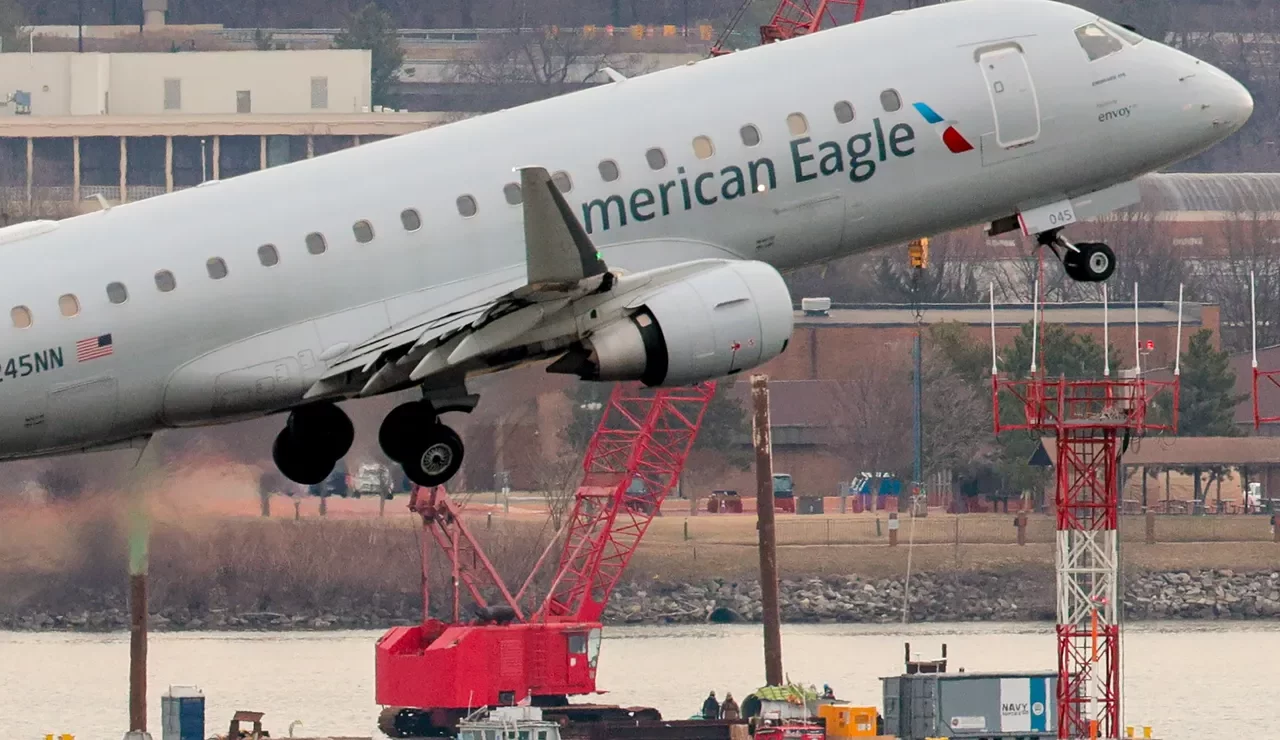It’s the story you never want to have to cover as an aviation reporter. Last week, we saw the first fatal crash of a U.S. airliner in almost 16 years when an Army Black Hawk helicopter collided with an American Airlines regional jet over the Potomac River near Reagan National Airport.
Nearly 70 people died – there were no survivors – and every life lost is nothing short of its own individual tragedy.
In the face of such tragedy, it’s important to do a few things.
An official, thorough investigation is underway and the National Transportation Safety Board, which is leading the inquiry, is the gold-standard investigative body for the aviation industry. The truth about exactly what happened last week, and how, will come out. In the meantime, speculation on the internet or from the analyst class does nothing to help or bring back the people we lost.
Second, we should trust and take comfort in the investigative process.
In the U.S., we’re very lucky that this kind of tragedy is exceedingly rare. The fact that, as an aviation reporter, I’m not writing about disasters like what happened on Wednesday on a regular basis is a testament to how safe flying really is in this country. It wasn’t always that way, but it’s become so safe only because the airline industry as a whole has a sort of unofficial mantra that no one dies in a plane crash in vain.
Airlines, aviation accident investigators, manufacturers, flight crews, and everyone else who has made any contribution to the industry see every tragic loss as a learning experience. It can’t undo the devastation of a crash, but it can learn from each tragedy to improve the safety record for every future flight.
Every accident deserves, gets an investigation
As William J. McGee, senior fellow for aviation and travel at the American Economic Liberties Project, told me in my reporting on the immediate aftermath of Wednesday’s crash, the Federal Aviation Administration exists because the government and the airline industry tried to improve their safety records more than half a century ago.
“The reason we have an FAA is President Eisenhower (signed it into law) in 1958, in response to a midair collision over the Grand Canyon in 1956,” he said.
In that crash, a United Airlines Douglas DC-7 and a Trans World Airlines Lockheed Super Constellation collided over the Grand Canyon in uncontrolled airspace. Under the rules in effect at the time, crews on both planes had a responsibility to see and avoid other aircraft, but neither saw the other aircraft in time to avert the collision.
It was the first commercial aviation disaster to surpass 100 deaths and led to major reforms in how air traffic was controlled.
In the decades since the pattern in the industry has been the same.
An investigation is conducted after every accident. Professionals from across the industry participate and advise as they can. Investigators make recommendations, which stakeholders generally accept and implement.
No rash responses
One of the first aviation tragedies I covered professionally was Southwest Airlines Flight 1380.
In that incident, the engine on a Southwest Airlines Boeing 737 broke apart mid-flight. A piece of the engine was flung into the aircraft, destroying a window, which led to a rapid decompression of the cabin that killed one passenger.
The NTSB ultimately recommended inspections and a redesign of the engine cowling (the exterior part of a jet engine) to ensure a similar failure can’t happen again.
A few months later, Boeing’s long stint under the safety microscope truly began when back-to-back 737 Max crashes happened overseas, killing hundreds.
Most recently, another 737 Max lost a section of its fuselage during a flight. While there were no fatalities in that incident, it still underscores how the industry responds.
All of these 737 incidents, along with every other incident in commercial aviation, get the same treatment: a thorough investigation that ultimately leads to official recommendations for improvement.
While Boeing has faced criticism for its slow response, in some ways, slowness is part of what makes the process work. Safety doesn’t come from rash responses. It takes deliberative, well-thought-out plans to make meaningful improvements to an already-safe system.
In the immediate aftermath of Wednesday’s disaster, the Federal Aviation Administration closed two helicopter corridors near the DCA airspace that may have been implicated in the crash. It’s a sensible first response, but it remains to be seen what the investigators ultimately recommend as a long-term fix.
There’s not really much else to say at this point. The whole nation mourns the victims of Wednesday’s crash, and we all eagerly await news about how aviation will get safer as a result.
For now, we can and should all take comfort in that. The process will play out, and in the end, flying will inevitably be made safer in response to this tragedy.
